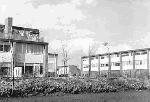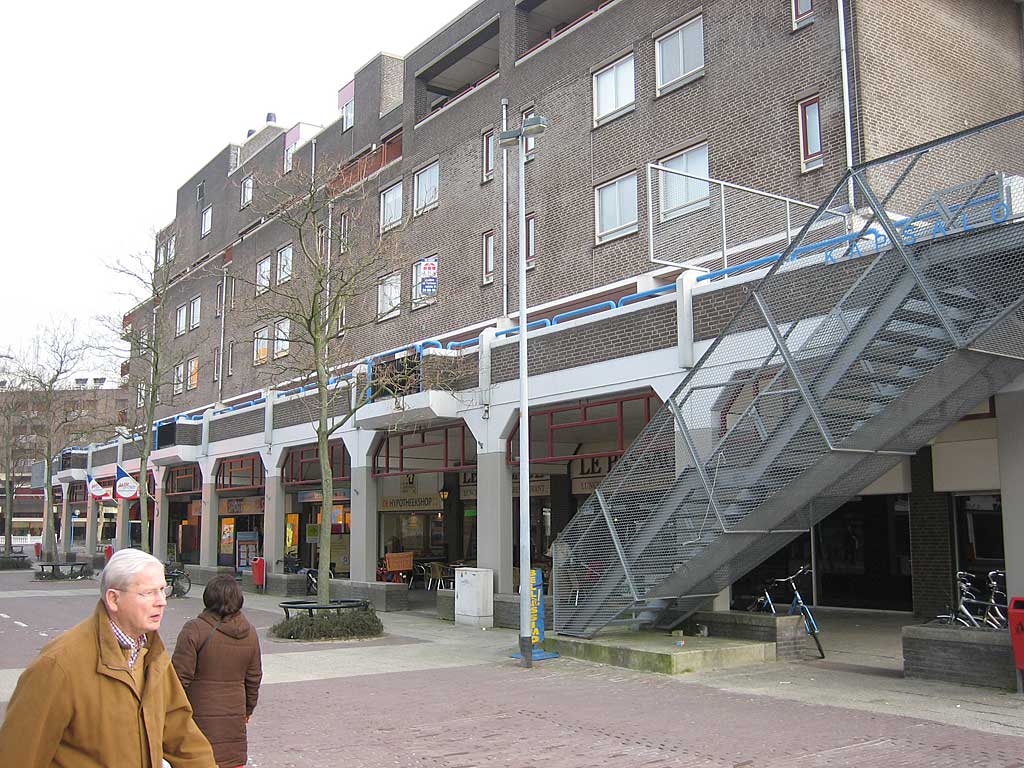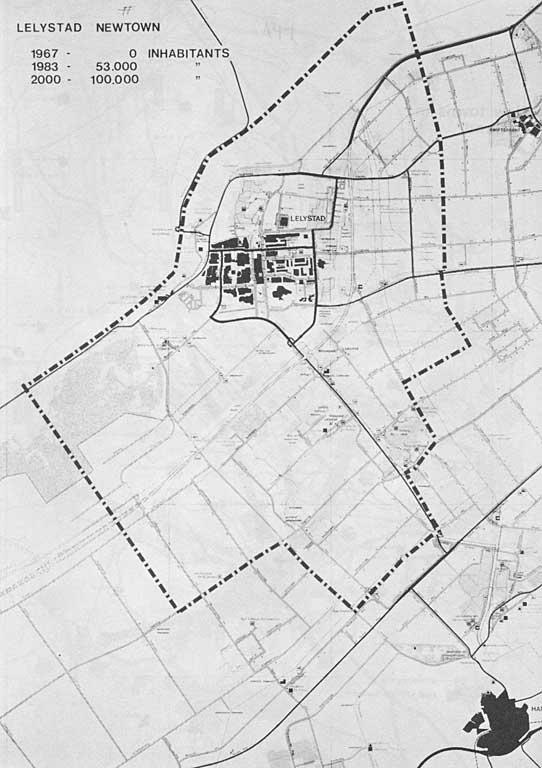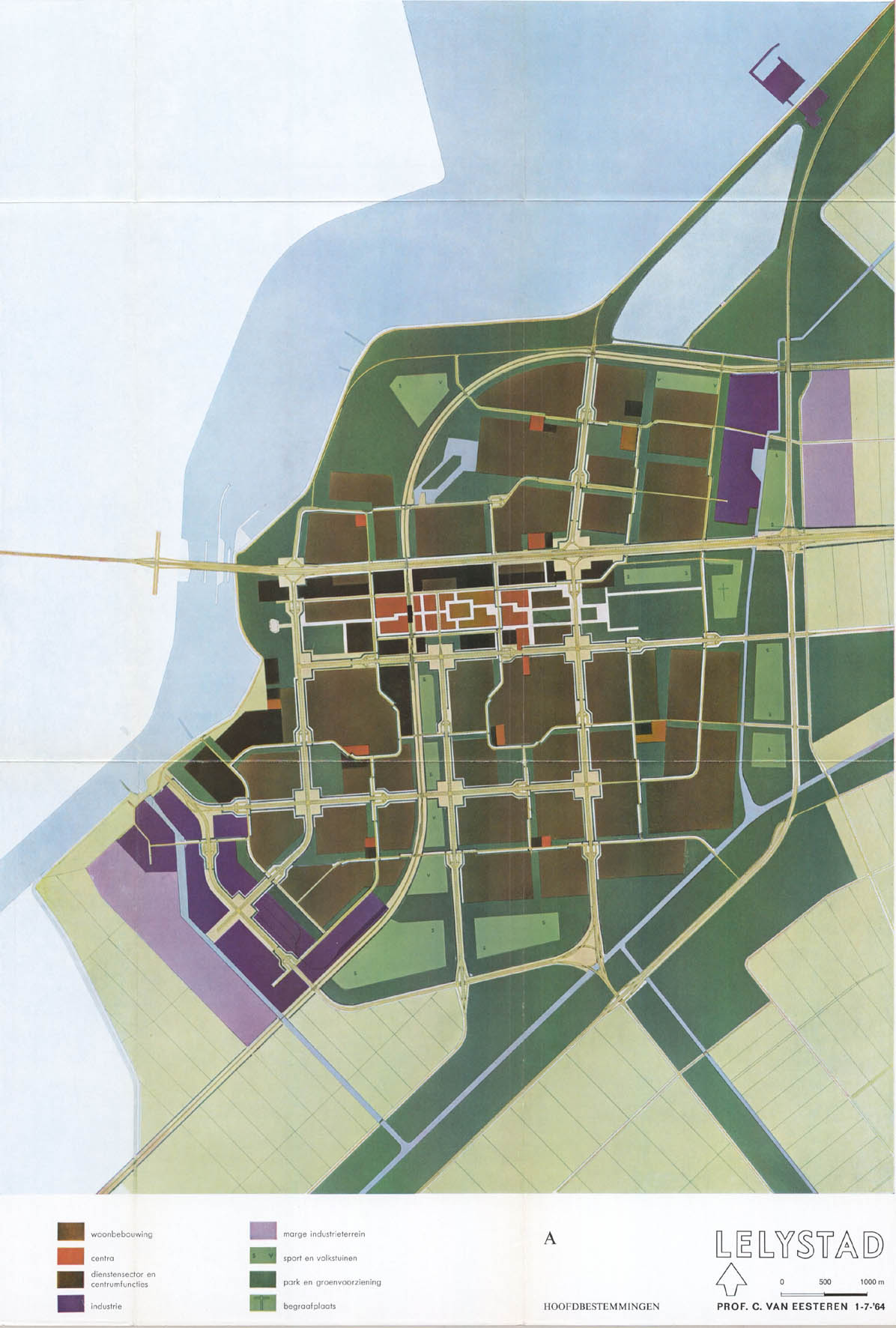|
|
Lelystad, Netherlands, Europe |
|
|
|
|
|
|

Row house development in
Lelystad, 1969
source: Nieuw Land
Erfgoedcentrum, Lelystad

2008
source: INTI

source: 'New Towns World-Wide',
A.K. Constandse, E.Y.
Galantay, T. Ohba (ed.),
IFHP, The Hague 1985
|

Lelystad is a new town in the centre of the Netherlands. It is the capital of the province of Flevoland. The city, built on reclaimed land in the former Zuiderzee (which is now a lake called IJsselmeer), was founded in 1967 and was named after Cornelis Lely, the father of the Zuiderzee reclamation project.
The planners who were responsible for realizing Lely's grandiose scheme agreed that the new polders of the former Zuiderzee should have a central city. People like Cornelis van Eesteren, who in the 1950s undoubtedly was the most famous urban planner in the Netherlands, envisioned Lelystad not as a sleepy provincial town but as an important city with a population up to 100,000, as the crown on all the accomplishments of the Zuiderzee project. In 1959, van Eesteren was commissioned by the Dutch Ministry for Waterworks to make the plan for Lelystad. In 1964 van Eesteren presented his plan to the authorities, but the underlying ideas were rejected by the Rijksdienst voor de IJsselmeer polders (IJsselmeer polders Development Agency or RIJP). The RIJP was a sub-department of the Ministry of Transport and Water Management. Its main task was to produce plans for the infrastructural works in the IJsselmeer polders.
Following the rejection of van Eesteren's plan for Lelystad, the RIJP decided to take matters into their own hands. RIJP planners produced various plans for Lelystad. They opted for row-house development rather than apartment buildings, since they felt that row houses were more attractive to settlers in an empty polder.
In November 1965, construction started on the first neighbourhood streets. In October 1967, the first of the 381 dwelling units could be occupied. During those days, the RIJP planners still assumed that Lelystad would have to grow to 100,000 inhabitants in the year 2000. Lelystad would become a refuge for those who no longer could put up with living in the congested urbanized areas in the western parts of the Netherlands (the so-called 'Randstad').
An important element in the early plans for Lelystad was that bicycle and pedestrian traffic routes were separated from car traffic routes. Moreover, Lelystad was supposed to be a 'green' city. The ideas of the British garden city movement served as an important source of inspiration for RIJP planners. They frequently paid visits to the various new towns in Britain.
As mentioned above, Lelystad was the designated capital of the IJsselmeerpolders. However, this ambitious vision was never realized. Today, Lelystad has a population of only 72,000. Tragically, in many ways the city has been eclipsed by Almere, which boasts a population of nearly 200,000 inhabitants. The fact that plans for the reclamation of the Markerwaard polder have so far not been realised casts a shadow over the future of Lelystad, since the city is no longer located at the crossroads of the IJsselmeer polders. In the 1980s, Dutch economy was faced with a severe crisis. The outward movement of people and businesses from the congested Randstad areas slowed down, and the concept of the 'compact' city became popular. As Van der Wal had it: "National policies changed, housing contingents were halved, Lelystad was left to its own devices. The debilitating effects of a more popular and better located Almere, the high coast of a spacious urban layout, the exploitation of disproportionally extensive public services, and a limited municipal budget, weighed heavily on Lelystad." Low housing prises meant that Lelystad was particularly popular with low-income population. This meant that social coasts were high. The city began to project a negative image of being some kind of polder slum. In 1986, Lelystad was even placed under national guardianship.
In the 1990s, local government initiated a program to polish up its tarnished image. Plans were introduced to develop the long-neglected coastal area of Lelystad for touristic and commercial purposes. Today, the city aims at attracting a higher-income population. Lelystad is steadily sailing out of the doldrums, even though it is still haunted by the ghosts of the past.
source: |
|
2008 - 2024 disclaimer
|

